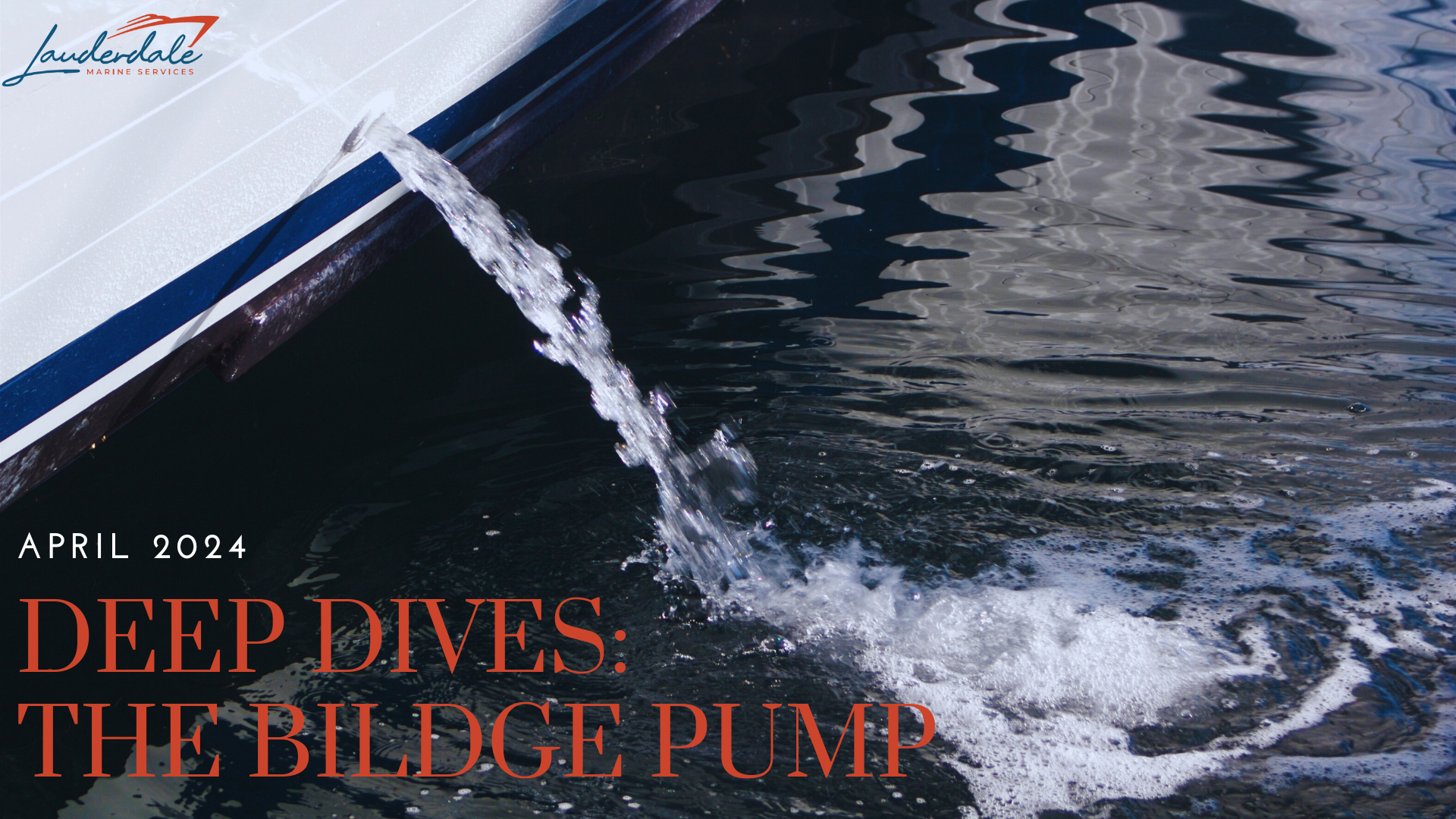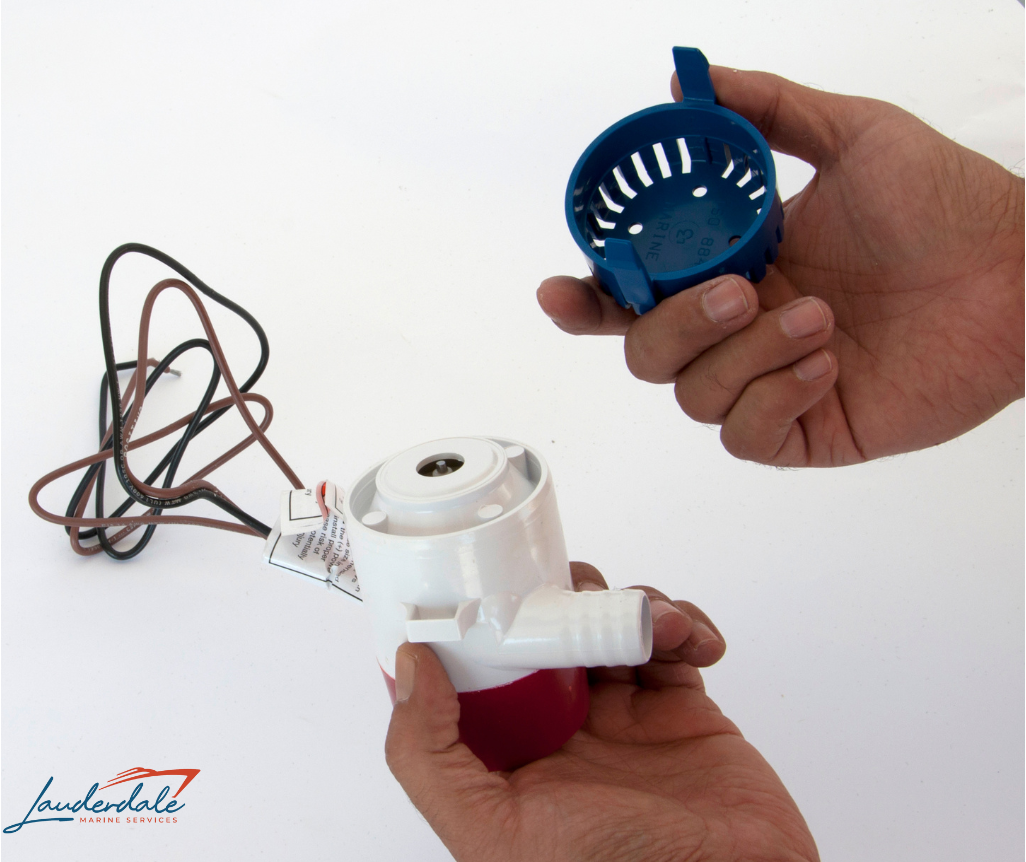
Let’s face it, seasoned yacht owners like ourselves have seen (and maybe even smelled) it all. But when was the last time you truly thought about your bilge pumps? These unsung heroes quietly toil away, keeping the heart of your vessel safe from watery intrusions. This month we dive deep (pun intended) into the fascinating world of bilge pumps!
Beyond Bilge Basics:
Bilge pumps are not one-size-fits-all. Here’s a breakdown of common types:
-
- Electric Bilge Pumps: These workhorses form the backbone of most bilge pumping systems. They come in various capacities (measured in gallons per hour – GPH) to handle different volumes of water.
- Automatic Bilge Pumps: Activated by a float switch, these pumps turn on and off automatically when water levels rise in the bilge. This ensures unattended operation, but it’s crucial to have a backup system.
- Manually Operated Bilge Pumps: These allow for direct control, useful in situations where continuous pumping is needed or during troubleshooting.
Technical Considerations:
-
- Bilge Pump Capacity: Selecting the right capacity is vital. Factors to consider include yacht size, bilge volume, and potential water ingress scenarios (heavy seas, leaks, etc.). A marine specialist can help determine the appropriate GPH rating for your yacht.
- Bilge Pump Installation: Proper placement ensures efficient water removal. Bilge pumps should be positioned at the lowest point of the bilge to capture accumulating water. Additionally, hoses and discharge outlets need to be correctly sized and angled to avoid clogs or backflow.
- Bilge Pump Alarms: Bilge alarms act as the first line of defence, alerting you to rising water levels. Choose an alarm with an audible and visual alert system to ensure you don’t miss a critical notification.
Pro Tip: Bilge pump redundancy is your best friend! Having a secondary pump system (perhaps an emergency bilge pump powered by the engine) ensures you’re never caught bilge-less in a storm.
The Silent Threat: Bilge alarms are essential, but what if the silent enemy strikes? Bilge water can mask the presence of fuel leaks or coolant breaches. Regular bilge inspections and odor checks are crucial for early detection and preventing potential disasters.

The Bilge Pump Whisperer
Keeping your bilge pumps happy is key. Schedule regular maintenance checks to ensure proper functionality and clean the bilge pump strainers to prevent clogging. Remember, a happy bilge pump means a happy yacht (and a happy owner)!
# 1 Regular Maintenance Check
- Frequency: Conduct these checks at least monthly, or more often if you use your yacht frequently or navigate waters prone to debris.
- The Process:
-
- Turn off the main electrical breaker: Safety first!
- Locate the manual bilge pump override switch (or use the automatic float switch if you have a helper): Activate the pump and listen for proper operation.
- Observe water flow: Ensure a steady stream exits the discharge hose. Look for any leaks around the pump or hose connections.
- Listen for unusual noises: Grinding, whining, or excessive vibration could indicate worn components or debris caught in the impeller.
Pro Tip: If you suspect a failing bilge pump, don’t wait! Schedule a service appointment with a qualified marine technician for further inspection and potential repairs.
Strainer Cleaning
The bilge pump strainer acts as a shield, preventing leaves, twigs, and other debris from reaching the impeller, the heart of the pump. Here’s how to keep it clean:
- Frequency: Clean the strainer as often as needed, especially after heavy rain, storms, or anytime you notice a decrease in bilge pump performance.
- The Process:
- Locate the strainer: It’s typically a basket-like filter attached to the bottom of the bilge pump.
- Remove the strainer: Consult your yacht’s manual for specific removal instructions.
- Clean the strainer thoroughly: Remove any debris and rinse the strainer with clean water.
- Inspect the strainer for damage: Cracks or tears can compromise its effectiveness. Replace a damaged strainer immediately.
Pro Tip: Keep a spare strainer on board for quick replacements during emergencies.
This Month’s Challenge: Share your most creative bilge pump solution in the comments below! Did you jury-rig a fix during a rough crossing? We’d love to hear your seafaring tales (and maybe learn a trick or two)!
Fair winds and following seas!
The Lauderdale Marine Services Team
#YachtMaintenance #BilgePumps #YachtingExpertise

